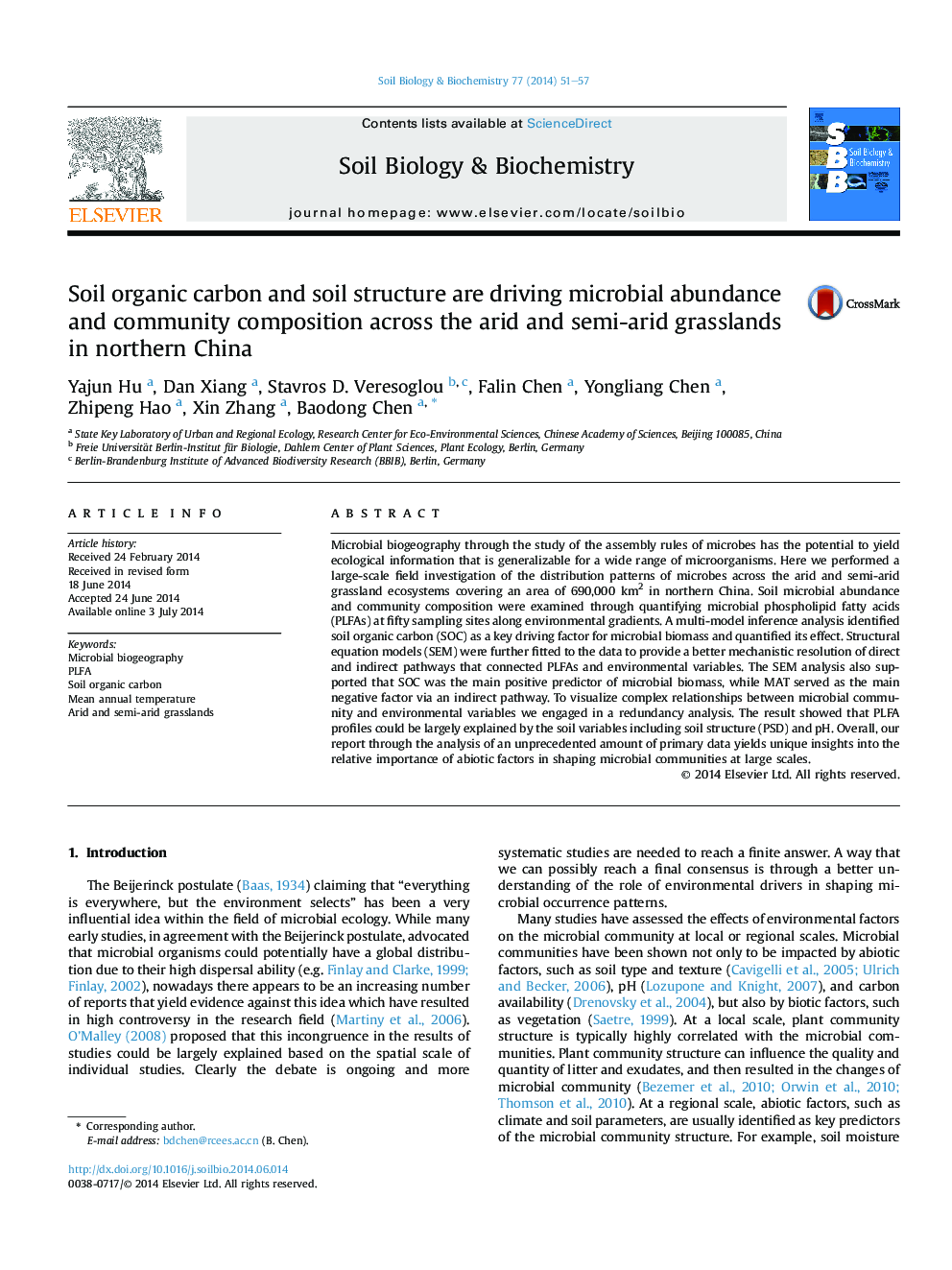| Article ID | Journal | Published Year | Pages | File Type |
|---|---|---|---|---|
| 8364465 | Soil Biology and Biochemistry | 2014 | 7 Pages |
Abstract
Microbial biogeography through the study of the assembly rules of microbes has the potential to yield ecological information that is generalizable for a wide range of microorganisms. Here we performed a large-scale field investigation of the distribution patterns of microbes across the arid and semi-arid grassland ecosystems covering an area of 690,000Â km2 in northern China. Soil microbial abundance and community composition were examined through quantifying microbial phospholipid fatty acids (PLFAs) at fifty sampling sites along environmental gradients. A multi-model inference analysis identified soil organic carbon (SOC) as a key driving factor for microbial biomass and quantified its effect. Structural equation models (SEM) were further fitted to the data to provide a better mechanistic resolution of direct and indirect pathways that connected PLFAs and environmental variables. The SEM analysis also supported that SOC was the main positive predictor of microbial biomass, while MAT served as the main negative factor via an indirect pathway. To visualize complex relationships between microbial community and environmental variables we engaged in a redundancy analysis. The result showed that PLFA profiles could be largely explained by the soil variables including soil structure (PSD) and pH. Overall, our report through the analysis of an unprecedented amount of primary data yields unique insights into the relative importance of abiotic factors in shaping microbial communities at large scales.
Related Topics
Life Sciences
Agricultural and Biological Sciences
Soil Science
Authors
Yajun Hu, Dan Xiang, Stavros D. Veresoglou, Falin Chen, Yongliang Chen, Zhipeng Hao, Xin Zhang, Baodong Chen,
